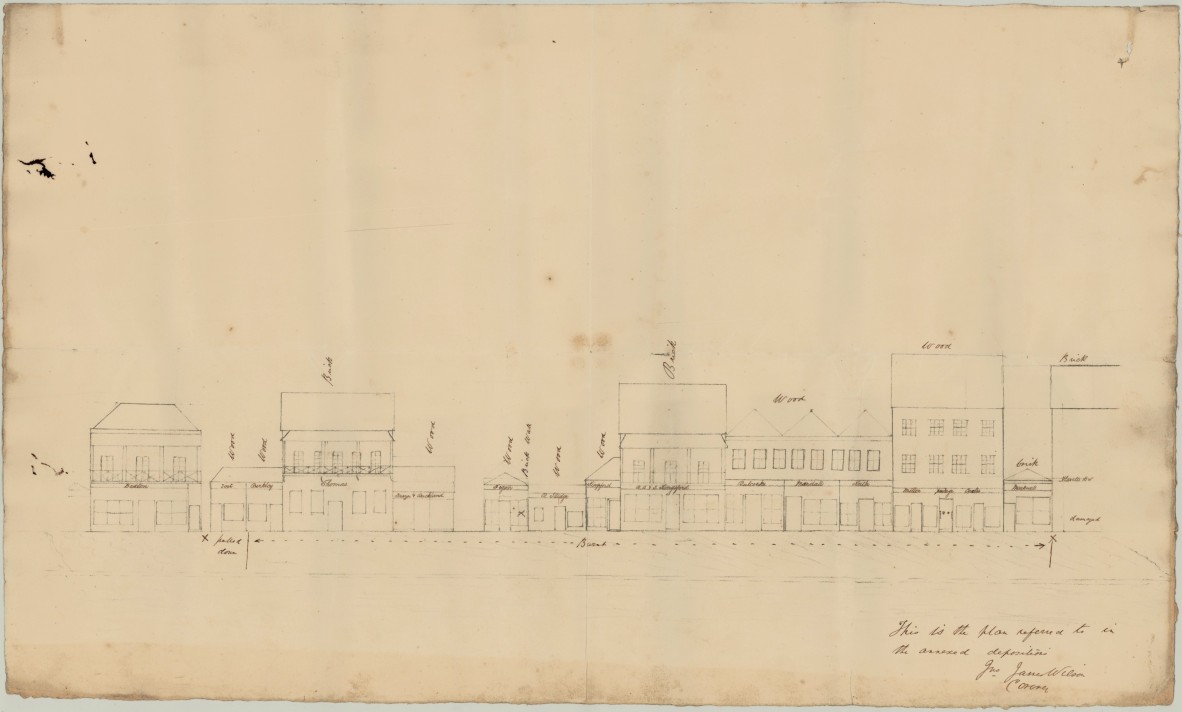Guest Blogger: Susan Boulton - Queensland State Archives
Fire presented a grave risk to the timber-built shops which were commonly built in Brisbane 150 years ago. Three separate fires occurred in the centre of Brisbane city in 1864 and inquests held at Queensland State Archives provide details of the origin of the fires, property lost or destroyed and witness statements.
On 11 April 1864 the Queen Street business partnerships of Frazer and Buckland’s, R A & I Kingsford, Bulcocks and Fegan, and the one-man businesses of Mr Jost, Mr Berkley, Mr Mandell, Mr Keith, Mr Thomas and Mr Markwell were either damaged or destroyed. This fire was investigated by Coroner Justice James Wilson. The inquest file includes this plan of the damaged or destroyed buildings.

On 4 September, the second fire of 1864 was discovered by Constable Blake in Refuge-Row. Blake was on duty inEdward Street when he noticed a light in the shop know as the Little Wonder. The inquest held at Queensland State Archives records that Blake heard a crackling sound and raised the alarm. The Little Wonder, the business of Mr Francis Marriott, and the adjoining Bulcock’s vegetable store were destroyed. Sadly, Mr Marriott had relocated his book business after the April fire in Queen Street to Refuge-Row.
And what about the third fire in Brisbane? This fire began in Stewart and Hemmant’s drapery warehouse on 1 December 1864. It blazed through the centre of the city destroying many business and houses in Queen, Albert, George, and Elizabeth Streets.
Fire fighters in the 19th century would have relied on early maps such as Mckellar's official map of Brisbane and suburbs to find and identify the buildings under threat in the 1864 fires. You can view these maps online in Image Queensland on the Queensland State Archives’ website here. You can also learn about the work of volunteer fire brigades including those who dowsed the flames in 1864 on our website at Fiery beginnings .
Newspapers of the day document that many of the store keepers and retailers impacted by the 1864 fires had insurance for their stock. In later years, insurance for the buildings was informed by risk rules and regulations such as those written by the Fire Underwriters’ Association of Queensland. You are welcome to visit Queensland State Archives to explore records relating to early Brisbane.
Comments
Your email address will not be published.
We welcome relevant, respectful comments.